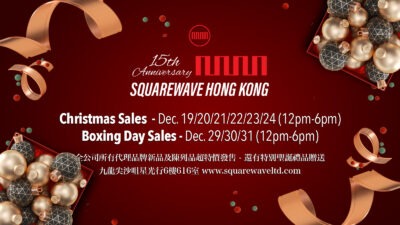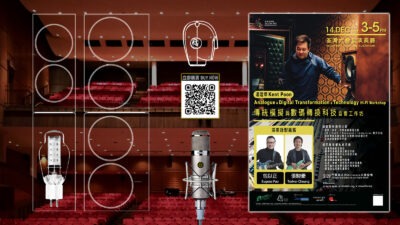The International Audio Society of Japan (IASJ) is a voluntary association of importers and manufacturers of advanced audio products. Its objective is to promote the distribution and innovation of fine, world-class audio products and related devices. Its former name was the Society of Consumer Audio Equipment Distributors (SOCAD).
Tokyo International Audio Show (TIAS) held every year in the fall. Attendance is now more than 10,000 visitors each year. The Show brings together 28 corporate members under one roof and exhibits products representing about 170 brands from different parts of the world. The event began in 1983 under the name, Import Audio Show. In 1997, the 15th annual show was held for the first time at the prestigious Tokyo International Forum. Before then, the shows had highlighted imported audio products, but since 1997 they have also included Japan’s best audio brands.
Hard disk Music Sources
Japanese audiophiles adopt new hard disk music sources in high end system. It is no longer a HTPC world versus the traditional CD/SACD playback issue.
Linn DS system has 4 products (Klimax DS / Akurate DS / Majik DS / Sneaky DS), a strong line up targets hard disk sources. The Ethernet connection (100Base-t RJ45) with NAS (Network Attached Storage) provides high capacity storage, multi-room connection. A lot of japanese audiophiles are looking into this direction because the format itself is scalable and supports traditional CD resolution 16bit/44.1kHz to Hires 24bit/ 192khz. This idea matches perfectly with our Audiophile Jazz Prologue – Part3 Limited Edition release.
I like the Linn custom GUI that enhances the highend audio playback experience on computer screen. Although in our Rip test we found different playback softwares can output identical bit transparent data, the visual presentation gives impact also. Linn online website selling high resolution music is something you should check out. From our production perspective, the high resolution source in 24/96 or 24/192 is much superior than CD resolution 16/44.1.
British manufacturer dCS offers a new Scarlatti upsampler featuring USB connection. My friend and dCS chairman David Steven hosts demo during the show with a small PC laptop and iTunes running on Windows. Traditional audiophiles who think iTunes are made for kids should learn something new, the Scarletti upsampler proves the digital theory that high quality playback can be achieved. David was very humble to say the good CD transport still performs better, and I guess it’s truth otherwise no one will buy its great Scarlatti CD transport.
Chord demo system includes a Macbook Pro, playing audio via professional audio software logic. The loudspeaker is a new brand to me. It reproduces nice high end from its ribbon tweeter.
Optical Disc Sources
Another big discussion during the show, SACD is disappearing in Japan Market. It shouldn’t be a big news to us, as we know the technical difficulties/limitations of SACD. But it is now in a complex period that hardware manufacturers are producing many better/newer SACD players (Luxman, Esoteric, Mark Levinson, Mclntosh), while the records companies are not producing softwares. There are few posts on our Audiophile Jazz Prologue- Part3 that some audiophiles would like to see a SACD version. However, the 2 Disc Limited Edition provides Hires files that clone to our masters. It will be the ultimate version to represent our recordings.
Besides SACD is disappearing, there are two new CD (16bit/44,1kHz) manufacturing technologies are introduced. I’m not talking about the ultra expansive Hard Glass CD, but SHM-CD and HQCD. Both of them offer new materials to replace the traditional aluminum reflective layer. They claim the sound is better because the reflectiveness of the disk is better. HQCD replaces the aluminum with silver alloy. HQCD is invented by Memory-Tech, which manufacture 20% of all CDs in Japan. SHM-CD is part of JVC invention, they have long history in K2, XRCD formats. Universal Music K.K. Japan, ECM (distributed by Universal in Japan) and Warners reissue their old catalogues in SHM-CD format. On the other hand, EMI/Blue Note are producing HQCD titles. It is obvious to see the format war becomes complex when such large records companies creating these niche market products. They are too hungry on sales and know audiophiles are people that still willing to buy optical disc recordings. It is the same case as you can see in Hong Kong/China every pop recording has a DSD logo on it, and I doubt if the producer ever know what’s that logo means.
Our japan distributor is helping us to check how much it costs to have the AJP-Part03 HQCD. We are told that the CD pressing costs is 5 times higher than normal CD. I got some SHM-CDs and HQCDs sampler and will test/measure to hear any differences. It is worth to note that if you rip the CD to your harddisk, the disk physical condition will no longer affect the sound quality of the playback. 24k Gold CD, Silver Alloy, SHM-CD, HQCD, JVC K2, they don’t have effect on your harddisk sources. If you are using CD transport, there is chance that a better quality disc produces better sounding. And, none of them can produce similar performances as our hand made Limited Edition Premium Made CD-R.
Giant Power Amplifiers
What is the new trend in high end audio market? Network computer sources and giant size power amplifiers. The most stunning setup in 2008 TIAS is definitely the Vivid Audio – Giya loudspeaker driven by the Goldmund Telos 5000. The Goldmund Telos 5000 height is almost 1 meter in height, weighted 260Kg giant size, and producing 5000w RMS into 2 Ohms. (1250w 8Ohm RMS). There are many discussions in Vivid Audio Giya speaker. The interesting outlook and sharp red colour gets draw huge attention. How about the sound performances? Excellent to my ears! i wish to have a more serious listening in the future.
The Switzerland Soulution amplifiers are another giant size amp! It drives the Sonus Faber loudspeaker with wonderful sounding. The high signal to noise ratio produces a very deep soundstage with high dynamic. Westlake Tower 12 is not a new loudspeaker, but always one of the best loudspeakers I have ever listened. There is an interesting thing I found in this TIAS. It is the company CEO to give the speech during demo. Dynaudio room is well decorated with lifestyle products such as wine glass, plane model, to give a luxury home feeling.
Analogue Vinyl
Besides the high resolution files base computer system, I also think the future high end audio industry will be the analogue vinyl. I agree completely that nothing beats the vinyl playback experience as a music enjoy package. First the large LP sleeve design is an art form, the LP setup involves mechanism is like an engineer art for end user. Before you actually hear the some from a LP, it already makes you focus on what you will be listened. During the show my very good friend and mentor Joe Harley, who did so many great Jazz and Blue records on AudioQuest music, demonstrates his BlueNote reissue LP. They have launched 12 titles and total of 55 titles will be released. I will wait for Weiss to release a reference phono preamp, and collect all these 55 BlueNote reissues as my first LP sets. By the way, LP fans finally getting the Famous Blue Rain Coat 20th Anniversary edition. Jennifer Warners Famous Blue Rain Coat is one of the most influence records in many audiophiles journey. To me, it is rated the highest with all time favorite “Ricky Lee Jones – Pop Pop” and “Duet”.
Japanese Manufacturer Accuphase released the new DG-48 room equalizer and DF-45 digital crossover. This current issue of Stereo Sound has a long article on setup and measurement with these 2 units. It gets my interest that I believe a good room equalizing system can give very positive improvement on audio playback (well there are already Weiss EQ1 user enjoying this feautre), although not all room acoustic problems can be fixed by DSP. Accuphase vision is a digital room equalization follow by a digital crossover network. The problem here is you either use a digital volume to control, otherwise the insert of the analogue preamp will become a bottleneck – Using an extra AD/DA or 6-8 channels analogue preamp (3-4 ways)
Luxman new amplifier has drawn high attention during the show with its retro outlook. I think combination of wood and metel, this design really shines. Luxman also developed new amp module and SACD transport. Esoteric has started licensed their transport designs to dCS, Mark Levinson etc. Remember the old Sony module that highly mis-read all SACD disc was a nightmare to many industry people. Glad to hear the SACD transport is getting mature in some status, unfortunately the software market is drying out.
I personally think this is the primary SACD problem. It is created for classical live recording productions, without any processing (BTW, do you know there are classical records that 1 minute can be combined more than 200 edits?) One can argue there are DSD processing in high precision PCM domain (for example DXD in 24bit/352kHz), but if this is the case why don’t we use high precision PCM from start to end? From the beginning stage of SACD, Philips team suggested to keep high precision/sampling rate PCM during the whole production until at the end upsample to DSD for SACD release. This suggestion is very logical. Audiophile doesn’t buy this concept as they want full DSD production. Then there are many DSD CD, DSD Mixing, DSD Mastering label on audiophile records, however those are all faults as after processing DSD data will become PCM and nothing different than normal PCM. Who can finish an album today without any editing & processing & mastering? I can just think of Alex from Waterlily, or Todd from MA. Sometimes the format and technical issue are only tools, it is the engineer/musician to create the sound they want. As an engineer, I always remember how I learnt Alan Parson did the long fade on Pink Floyd Dark Side Of The Moon with a long slice on analogue tape and echo return.
I’m writing this article while listening to Weiss latest DAC2, review will be up soon.



